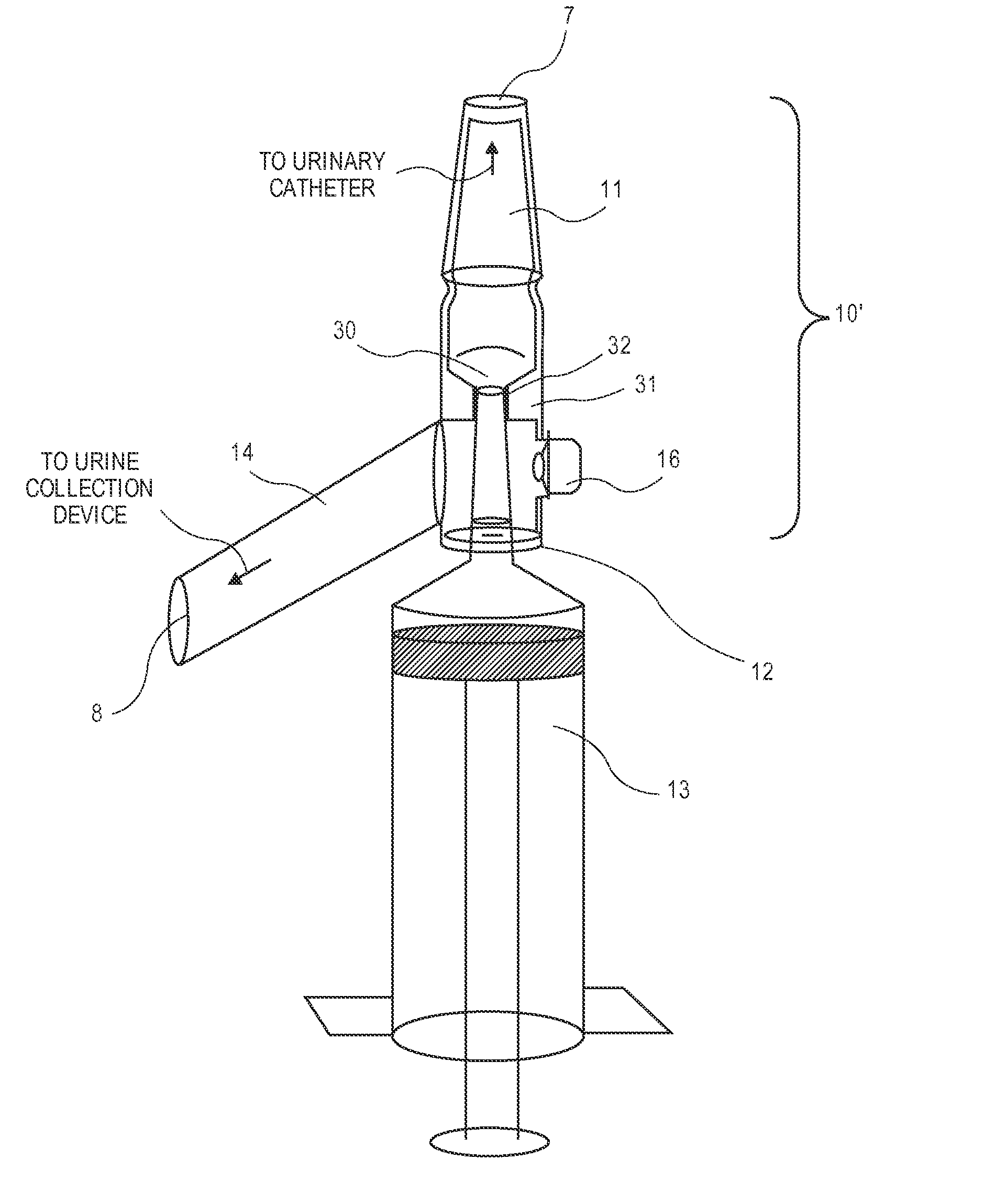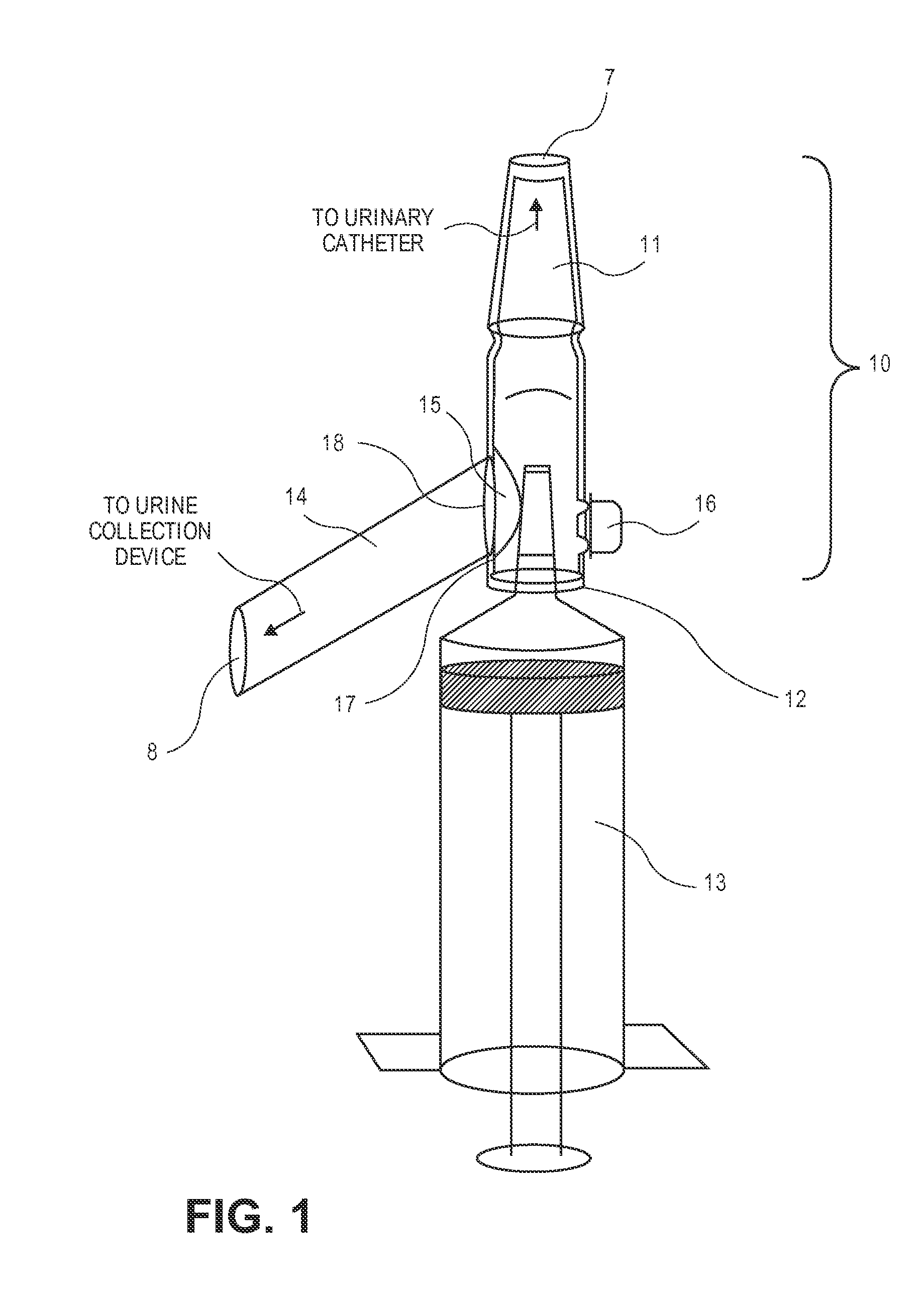Methods and Devices for Aseptic Irrigation, Urine Sampling, and Flow Control of Urine from a Catheterized Bladder
a catheterized bladder and aseptic technology, applied in the field of catheterized bladder aseptic irrigation, urine sampling, flow control, etc., can solve the problems of bio-hazardous waste exposure for clinicians, health and safety issues for patients, medical personnel, and the community, and achieve the effects of improving aseptic irrigation, convenient sanitization, and simplifying the problem
- Summary
- Abstract
- Description
- Claims
- Application Information
AI Technical Summary
Benefits of technology
Problems solved by technology
Method used
Image
Examples
Embodiment Construction
[0040]The following description and drawings are illustrative and are not to be construed as limiting. Numerous specific details are described to provide a thorough understanding. However, in certain instances, well known or conventional details may not be described in order to avoid obscuring the description. In accordance with the present invention, a novel and improved system for aseptic irrigation and urine specimen collection from the catheterized bladder is provided.
[0041]FIGS. 1 and 2 are illustrations of a self closing port and valve assembly 10 according to one embodiment of the present invention. Within this embodiment the device has a fully sanitizable self closing irrigation port 12 that allows a urinary catheter to remain attached to a urine collection device while being irrigated without disconnecting the urine collection device drainage tubing 14 from the urinary catheter (not shown). This allows for an aseptic, closed system, which keeps bacteria from entering the ca...
PUM
 Login to View More
Login to View More Abstract
Description
Claims
Application Information
 Login to View More
Login to View More - R&D
- Intellectual Property
- Life Sciences
- Materials
- Tech Scout
- Unparalleled Data Quality
- Higher Quality Content
- 60% Fewer Hallucinations
Browse by: Latest US Patents, China's latest patents, Technical Efficacy Thesaurus, Application Domain, Technology Topic, Popular Technical Reports.
© 2025 PatSnap. All rights reserved.Legal|Privacy policy|Modern Slavery Act Transparency Statement|Sitemap|About US| Contact US: help@patsnap.com



